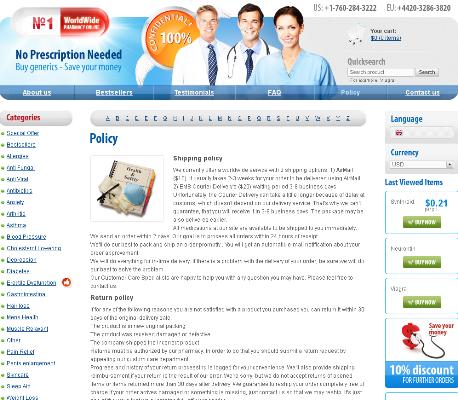Zyban Vs Traditional Nicotine Replacement Therapies
How Zyban Works Differently Than Nicotine Replacement
Unlike nicotine patches or gum, Zyban doesn’t put any nicotine into your body. Instead, it works as a prescription pill that affects your brain’s chemistry. Originally developed as an antidepressant, Zyban changes the balance of neurotransmitters like dopamine and norepinephrine, which helps reduce cravings and ease withdrawal symptoms. This approach sets Zyban apart from traditional methods that simply provide a controlled dose of nicotine to replace cigarettes.
For many smokers, Zyban’s unique mechanism can mean fewer physical reminders of their addiction. With traditional nicotine replacement therapies (NRT), the body still receives small amounts of nicotine, potentially prolonging dependence for some users. Zyban removes that cycle entirely by targeting the mental and emotional triggers that drive the urge to smoke.
| Method | Main Ingredient | How It Works |
|---|---|---|
| Zyban | Bupropion (no nicotine) | Alters brain chemicals to ease cravings |
| NRT (patch, gum, lozenges) | Nicotine | Provides controlled nicotine doses |
Comparing Effectiveness: Success Rates and Real-life Results

Many smokers are surprised to learn that Zyban does not deliver nicotine at all, yet numerous clinical studies suggest its quit rates often rival or surpass traditional nicotine replacement therapies (NRT). While patches and gum offer a familiar, gradual transition off cigarettes, real-world results show Zyban can double a smoker’s chances of quitting compared to going cold turkey.
Real-life testimonials highlight that success with Zyban often comes from its ability to curb withdrawal symptoms and reduce cravings, especially for long-term or heavy smokers. However, personal motivation and support still play critical roles in sustained abstinence, whether using Zyban or NRT.
Who Should Consider Zyban or Traditional Nrt?
For individuals who’ve tried multiple quit attempts using patches or gum with little success, zyban offers a fresh approach that doesn’t rely on nicotine replacement. Zyban works in the brain to reduce cravings and withdrawal symptoms, making it appealing to those who want a medication-based strategy rather than a nicotine substitute.
On the other hand, traditional nicotine replacement therapies (NRT) like lozenges and patches are ideal for people who are cautious about prescription medications or have a preference for step-down methods. NRT allows smokers to taper off nicotine at their own pace, fostering a gradual break from the habit.
A doctor can help determine which option aligns with your medical history and quitting goals.
Potential Side Effects: What Smokers Need to Know

As smokers weigh the decision to quit, understanding the potential side effects of each approach becomes crucial. Zyban, a prescription medication, does not contain nicotine but works on the brain’s neurotransmitters. Some users report experiencing insomnia, dry mouth, or mild headaches, especially in the first few weeks. Rare but serious side effects, such as seizures, have been documented, making it essential for users to discuss personal health history with their healthcare provider.
By contrast, traditional nicotine replacement therapies (NRTs) like patches, gum, or lozenges generally have milder side effects—mostly localized, such as skin irritation, mouth soreness, or nausea. Because NRT delivers small doses of nicotine, the body may adjust more gently over time, but users should still watch for signs of allergic reactions or persistent discomfort.
Balancing side effect risks is important for long-term success. While Zyban’s non-nicotine approach appeals to those looking to avoid nicotine altogether, NRT may be suitable for people who struggle with withdrawal symptoms but have contraindications to prescription medications. Ultimately, speaking candidly with a healthcare provider ensures a safer and more effective quit journey.
Accessibility, Prescriptions, and Cost Differences
For many smokers, choosing between Zyban and traditional therapies often comes down to practicality. Zyban requires a prescription, so a doctor’s visit is a must, sometimes making access less immediate compared to over-the-counter nicotine patches or gum. However, this medical oversight can be beneficial, offering tailored support along the way.
When it comes to cost, insurance coverage can create significant differences. While many health plans help offset Zyban’s price, out-of-pocket expenses are possible. Traditional NRTs are generally widely available at pharmacies, but ongoing purchases can add up over time.
Below is a comparison for quick reference:
| Factor | Zyban | Traditional NRT |
|---|---|---|
| Prescription | Required | Usually not required |
| Availability | Pharmacy (With Prescription) | Over-the-counter |
| Typical Cost | Insurance or out-of-pocket | Out-of-pocket |
Personal Experiences: Patient Stories and Testimonials
For many individuals, the journey to quit smoking is deeply personal, and hearing from others who have walked that path can be incredibly motivating. One patient, Mark, shared how he tried patches and gum for years without lasting success, but found Zyban made resisting cigarette cravings much easier. On the other hand, Lisa recounted her preference for gradual nicotine reduction using lozenges, appreciating the familiar ritual alongside support from her healthcare provider.
Both approaches require commitment, and experiences often vary widely. Some individuals reported that Zyban helped lift their mood during withdrawal, while others experienced mild side effects and switched back to traditional NRT. Real-life stories highlight that finding the best method is a matter of personal fit, reinforcing the importance of patience and professional guidance.

